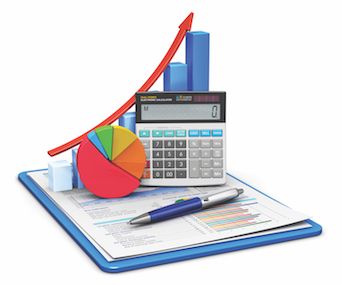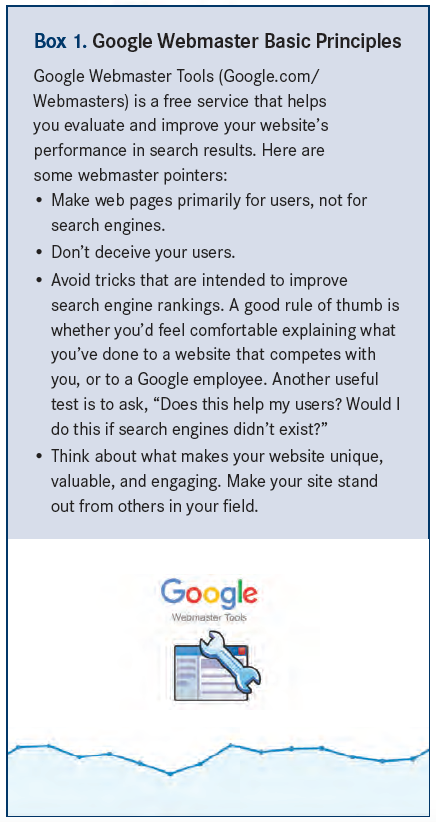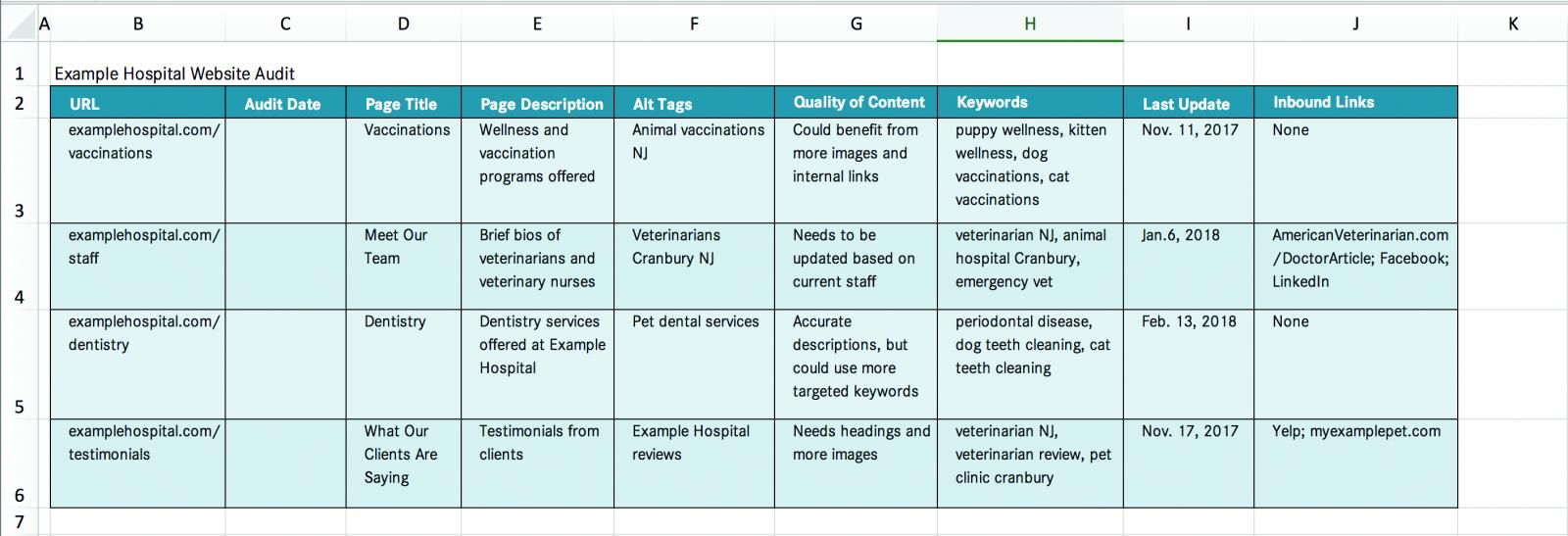Why and How to Audit Your Practice Website's Content
An informative and educational website helps keep clients engaged and win new business.

A practice website is a must for keeping clients informed and attracting new pet owners to your hospital. Your site needs to be up-to-date, educational, and enticing. After all, it’s a direct reflection of your practice. When was the last time you looked critically at your hospital’s website? If you can’t remember, then it’s probably time for a content audit.
What is a Content Audit?
A content audit is a comprehensive review of your website to ensure that everything is current, accurate and, most importantly, informative. The digital mate­rial you publish is what pet owners depend on for guid­ance about your services, staff, and practice culture. Conducting routine content audits verifies that your website remains true to your goals and can help guarantee that your site attracts local traffic looking for the services you offer. Without a proper content audit system in place, outdated and irrelevant data might find its way onto your website, giving clients inaccurate information and negatively affecting how well your website is ranked by search engines, such as Google and Bing.
Optimizing your site for search engines—a prac­tice called search engine optimization (SEO)—can be done in a number of ways, but 1 method that has an undeniable impact is the strategic creation and placement of content. If done correctly, SEO has been proven to improve the quantity and quality of website traffic. The written text on your site, in conjunction with the featured multimedia such as photos and videos, helps search engines under­stand exactly what your page, and ultimately your entire site, are about. The more the search engine understands about your site, the more likely it is to respect and value your site.*
Search capabilities have advanced tremendously over the years, and sophisticated tools and algorithms are now used to determine where your website appears when people are looking for information.

In the past, high rankings for pages on a website were accomplished by an overuse of frequently searched keywords. Now, the best way to achieve that ranking goal is for your website to be considered an authority. That means you should prune any low-quality or conflicting content. To gain a better understanding of what Google considers quality content, consult the Google Webmaster guidelines (Box 1), which outline how Google finds and understands your pages.
By conducting a content audit, site owners will have a better understanding about whether their site has been rewarded, penalized, or ignored by search engine algorithms, and why. Key items to look for during an audit include:
- Gaps or redundancy in content
- Any required upgrades
- Editing and copywriting improvements
- Opportunities to link to internal pages on your website
- Content that slows down how quickly a webpage loads
How to Perform an Effective Audit
While there are third-party platforms that make website content auditing effortless, the only tools you really need for an effective audit are a spreadsheet and access to Google Analytics.
Create a Spreadsheet
The first step in the audit is to list every item currently existing on your website. Seeing all the data related to your website in a single spreadsheet provides perspec­tive to understand webpages with robust data and flags areas in need of improvement. List the following headings in the first 9 cells of the first row: URL, audit date, page title, page description, alt tags (alternate text for an image), quality of content, keywords used, date of last update, and inbound links
List Webpages Using Google Analytics
After you have set up the spreadsheet and shared it with any team members who are participating in the audit, access Google Analytics (Box 2) for your website. Once you’ve logged in, navigate to the “All Pages” section, where you will find a list of all the pages that make up your website. From here, copy the individual URLs into the first column of your spreadsheet, under the header “URL.”
Now you can start the audit. Review the content of your site’s most popular pages first. You can easily determine which pages are most popular within your Google Analytics account by reviewing which pages visitors frequent the most. It’s important to invest your best effort to make these pages inter­esting and current. For maximum effect, build on the most popular content with related high-quality, relevant content.
Audit SEO Elements
As you move forward, the URL paths for pages of your site should be composed of text only, with no confusing characters or numbers. It should be attractive, distinc­tive, concise, and relevant all at the same time. It’s important to note that after a page is published, the URL should not be changed.
As it pertains to SEO, a page title, or meta title, is not what visitors see when they click on the page; it is the text portion of the link seen in the search engine. It should be about 60 characters and reflect the page’s content. A page title should never be used more than once, and should contain 1 word that best describes the overall content of the article or webpage. Page titles have a direct influence on how high or low your page is ranked for the term being searched.
Similarly, but not entirely, every page description appears on Google search results. The description, however, has no bearing on how high or low your page is ranked. What it does, though, is entice the searcher to click—or not—on your page. Ideally, a page’s descrip­tion should be less than 160 characters and should accurately summarize the overall page with a few keywords sprinkled in.
“Keyword” has become the most overused term when people talk about SEO. Unfortunately, there is no magical keyword that can result in better perfor­mance. Page content, however, is the most valuable asset on your website. Ensure that your website relays valuable information. Check for typos, grammatical errors, and mundane content. Websites that offer high-quality content that is unique and easy to read will be the most popular with pet owners and search engines alike.
Alt tags are descriptions applied to an image used on a webpage, and one of the most common mistakes made by site owners is not optimizing them. Depending on which content management system you use, when you add an image to the back end of your website you will have the option to add text; that’s alt text. It should be comprised of keywords that describe the image accurately. For as advanced as search engines are, they cannot read or understand images. Alt tags provide an alternative for search engines and permit them to crawl the site more accurately.
An important tool for all site owners to put into practice is the Google Ads Keyword Planner. By researching the more commonly searched words and terms and fitting them into your content, you ensure that you’re catering to pet-related questions being asked on the internet. The tool can also be used more specifically, such as to determine what words people are searching related to your hospital, location, and specialty (ie, “animal hospital Atlanta” or “dog teeth cleaning”). You’ll have to sign up for an account, but there is no charge to access the keyword tool.
When to Audit
Ideally, your website should be audited every few months, depending on the nature of your content. By conducting regular content audits and following Google Webmaster guidelines, you can ensure that your site remains relevant and rises to the top in search engine rankings.

Mr. Arulrajah is president and CEO of Ekwa Marketing, a complete internet marketing company that focuses on SEO, social media, marketing education and the online reputations of veterinarians/practice owners. With a team of 180+ full-time marketers, ekwa.com helps practice owners who know where they want to go, get there by dominating their market and growing their business significantly year after year. If you have questions about marketing your practice online, call 855-598-3320 to speak one-on-one with Naren.
